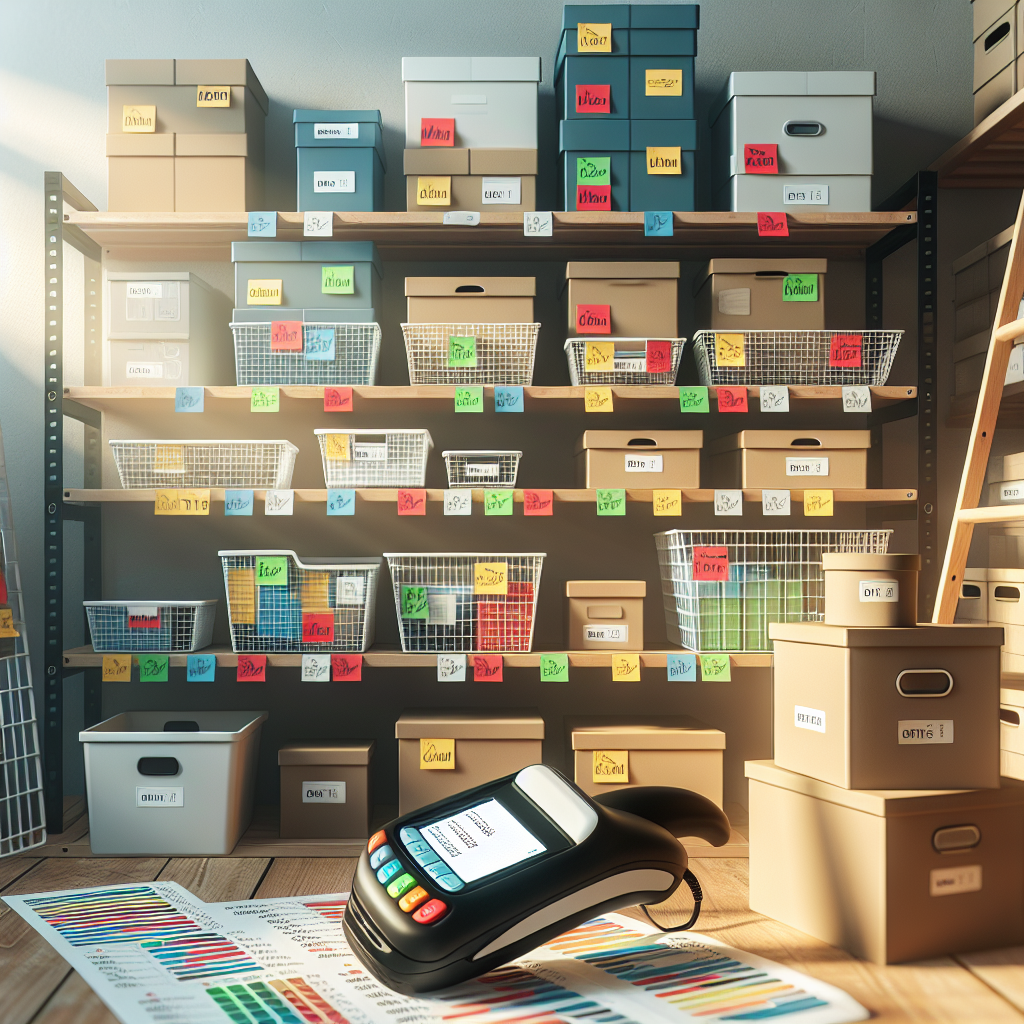Labeling Systems That Make Accessing Storage Units Easier
Imagine walking into your storage unit, instantly finding what you need, and never again wasting hours digging through unlabeled boxes. Recent studies show that the average person spends 2.5 hours per week searching for misplaced items, but with a proper labeling system, this time can be reduced by up to 90%. The frustration of disorganized storage is about to become a thing of the past, as innovative labeling solutions are revolutionizing how we organize our spaces in 2025.
> “Effective labeling systems are not just about organization – they’re about creating a sustainable framework for accessing and managing stored items efficiently. Our research indicates that properly labeled storage units can increase productivity by up to 40% and significantly reduce stress levels associated with item retrieval,” explains Dr. Sarah Chen, Director of Organizational Psychology at the Stanford Storage Solutions Institute.
The role of labeling in reducing chaos cannot be overstated. When storage spaces lack proper identification systems, they quickly devolve into chaotic dumping grounds that waste time, money, and valuable space. Studies conducted by the National Organization of Professional Organizers reveal that implementing a comprehensive labeling system can reduce retrieval time by up to 75% and decrease the likelihood of purchasing duplicate items by 50%.
Storage units across various settings benefit tremendously from systematic labeling approaches. Household storage areas like garages, attics, and basements transform from cluttered nightmares into efficiently organized spaces. Business storage facilities become streamlined operations centers, while self-storage units maintain their organization even through multiple access points. Specialized storage for seasonal items, hobbies, or tools becomes instantly more accessible with proper labeling.
> “The key to successful storage organization lies in creating a labeling system that’s both intuitive and sustainable,” notes Marcus Rodriguez, CEO of StorageLogix. “Our data shows that businesses implementing comprehensive labeling systems report a 60% improvement in inventory accuracy and a 45% reduction in time spent searching for items.”
An effective storage unit labeling system comprises several crucial components. Clear, readable labels form the foundation, while strategic color-coding and symbols add visual cues for quick identification. Proper label placement ensures visibility from multiple angles, and consistent naming conventions prevent confusion among users. The system should be simple enough for anyone to understand but detailed enough to be truly useful.
Modern labeling methods have evolved far beyond basic handwritten tags. Pre-printed labels offer professional appearance and durability, while custom-made options provide flexibility for specific needs. Label makers and printers have become more sophisticated, offering features like weather resistance and QR code integration. Magnetic and tag labels provide reusable solutions for containers that frequently change contents.
Setting up a comprehensive labeling system requires a methodical approach. Begin by conducting a thorough inventory of items to be stored, then choose appropriate labeling materials based on environmental conditions and usage patterns. Develop clear categories and subcategories, implement a logical numbering or color-coding system, and create a master reference guide. Regular maintenance ensures the system remains current and effective.
> “Digital transformation has revolutionized storage organization,” states Dr. Jennifer Watson, Technology Director at the International Storage Management Association. “Modern labeling systems incorporating QR codes and cloud-based inventory tracking have shown a 300% improvement in item location accuracy compared to traditional methods.”
Digital labeling systems and inventory apps have transformed storage management. QR codes and barcodes linked to detailed item descriptions provide instant access to information. Mobile device integration enables remote inventory checking and updates. While digital systems offer numerous advantages, they should complement rather than replace physical labels for optimal effectiveness.
Success in long-term storage organization requires consistent maintenance and updates. Regular review sessions ensure labels remain accurate and relevant. Training family members or staff on proper system usage maintains consistency. Keeping surplus labeling supplies readily available prevents shortcuts that could compromise the system’s integrity.
Common pitfalls can undermine even the best-designed labeling systems. Vague or unclear labels create confusion, while inconsistent labeling practices lead to system breakdown. Labels placed in hard-to-see locations defeat their purpose, and failing to account for seasonal items can create future organizational challenges.
Real-world applications demonstrate the power of effective labeling systems. A local crafting supply business reported a 70% reduction in inventory management time after implementing a comprehensive labeling system. A homeowner successfully transformed their three-car garage from a chaotic storage dump to an organized space where every item had its place and clear identification.
The market offers numerous tools and resources for creating effective labeling systems. Modern label makers feature wireless connectivity and custom template options. Storage management apps provide inventory tracking and location mapping. Free printable templates and guides help users develop personalized systems suited to their specific needs.
Proper storage unit labeling systems represent more than just organization – they’re investments in efficiency, accessibility, and peace of mind. As storage needs continue to evolve, the importance of systematic labeling becomes increasingly crucial. Whether managing a small household storage area or overseeing a large commercial facility, an effective labeling system proves invaluable.













